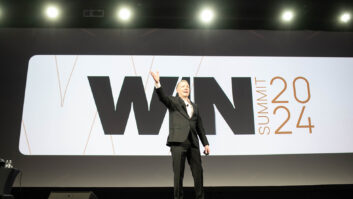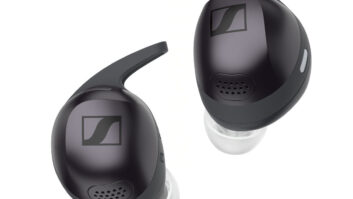Satellite radio broadcasters are positioning themselves to win a growing share of consumers’ ear time outside the car even though they believe the car market will account for a continuing majority of satellite-radio listening.
“The No. 1 environment for satellite-radio listening is the car,” said Lehman Brothers’ senior analyst Vijay Jayant. By the end of 2005, however, he expects 25 percent of the installed base of satellite tuners to be used in the home, whether they’re dedicated home tuners or transportable “plug-and-play” tuners that can be shuttled among home, car and boombox docking stations.
Yankee Group’s analyst Nitin Gupta also called car the king. “In our surveys, the major area for any audio listening is inside the car.”
Still, consumers spend enough time inside their homes or outdoors listening to music that Sirius and XM are expanding their selection of home and outdoor tuner options with new dedicated home tuners, headphone portables, and new boombox docking-station options.
XM in particular has been the most aggressive this year to press on into the home and portable markets. “Both believe the car is the No. 1 listening environment,” said Lehman’s Jayant, “But XM currently takes a somewhat broader view [for home and portable applications] because of smaller and less expensive chipsets with higher efficiency.” Sirius, however, “will branch out” more aggressively into the home and portable markets as its chipsets shrink in price, size, and power consumption, he noted.
This year and next, a combination of new product developments and an expected expansion of satellite-radio retail shelf space will drive increased subscriber listenership inside the home and outdoors, marketers contend. “Next year, our retailers will double our shelf space,” said Dan Murphy, XM’s product marketing and distribution senior VP. With expanded space to display home and boombox docks for tuners, he said, retailers’ docking-station attachment rates will rise. “Where home kits are merchandised, the attachment rate is closer to 50 percent,” he said, pointing to a current XM home-kit attachment rate of about 25 percent.
For its part, Sirius reports that its attachment rate of home docks to plug-and-play tuners is currently about 40 percent.
“The industry hasn’t focused on [home kits] as strongly as it could,” XM’s Murphy said. “The industry is growing and moving so quickly that open-to-buy dollars and merchandising space has not expanded as quickly as the product mix.” The market’s growth, however, is giving retailers “more confidence to give us more space.”
Higher-than-expected demand for integrated XM antenna/tuners is also raising XM’s expectations for home listening in 2006. Sales of the first Connect-and-Play home antenna/tuner, available since June through Audiovox, have exceeded expectations, requiring a ramp-up in production, Murphy said. In 2006, he said, XM projects double-digit attachment rates of the $49 antennas to XM-ready home A/V receivers and other home devices.
By year’s end, eight to 10 home electronics suppliers will offer XM-ready products, with at least 10 to 15 more launching their first products in 2006, Murphy said.
Dedicated XM and Sirius home tuners, meanwhile, will be available from at least 15 companies this year, most of them multi-zone models designed for custom installed distributed-audio systems. Dedicated home tuners appeared for the first time in 2003 and were available from only three suppliers.
Also growing in selection are boombox docking stations, whose sales this year and next will rise in part because of a greater selection of entry-level boombox docking stations for entry-level XM plug-and-play tuners, Murphy said. At XM, the attachment rate is already running at almost 50 percent, Murphy said. At Sirius, it’s running at about 30 percent.
Satellite-radio boombox docks, Murphy contends, will help revitalize the collapsing boombox market in much the same way that the first CD boomboxes helped turn around flagging unit and dollar boombox sales in the early 1980s. “As cassette matured and prices fell to $29 in the early 1980s, the retail community didn’t pay attention to boomboxes,” Murphy noted.
In 2004, factory-level CD-boombox sales fell 27 percent to a mere $270.1 million, CEA statistics show, down from 2001’s $672 million.
For the boombox customer, XM is expanding its selection of entry-level boombox docks for entry-level plug-and-play tuners with the launch of the Belkin-branded $99 boombox dock, the first such dock to accept transportable tuners from multiple suppliers.
The transportable tuners use an XM-standardized single-cable connector that replaces three wires for power, antenna input, and audio output to amplifiers. So far, two such tuners have been announced, but more are expected. The two are the $99 Delphi Roady XT due in early October and the $99 Audiovox XPpress, due early November.
The Belkin boombox, due sometime later this quarter, accepts both tuners and will accept future similarly sized transportable tuners incorporating the standardized connector.
XM also expects the first XM-ready boomboxes to appear in 2006 under its Connect-and-Play program, which enables XM-ready devices to control optional $49 add-on tuner/antenna combinations.
With these developments in mind, XM projects that at the retail level in 2006, sales of XM boombox docking stations will account for 8.5 percent of total electronics industry boombox sales in units and 10 percent in dollars.
XM’s standardized connector strategy will also boost satellite-radio listenership by consumers who listen to music via headphones while they’re walking, hiking or commuting by mass transit, Murphy said. In mid January, XM plans shipments of a rechargeable battery and integrated headset/antenna that connect to the transportable Roady XT tuner and Audiovox XPress tuner via the standardized cable. The package, originally intended for late-2005 shipment, will retail for $99 and deliver more than five hours of playback time on a single charge.
The combination could expand on-the-go satellite-radio listening because current subscribers who listen to XM at home or in the car won’t have to pay for a second, through discounted, subscription, as is the case with current wearable XM To Go headphone portables with integrated satellite tuners.
Battery/headphone packages are also available for a pair of Sirius plug-and-play tuners from Xact, but Sirius said it hasn’t aggressively pursued headphone-tuner portables for now given consumers’ expectations for uninterrupted reception while walking or commuting with headphone portables.
For that reason, Sirius said it plans October delivery of a Sirius-branded S50 headphone portable that stores and plays back time-shifted Sirius content as well as MP3 and protected WMA music files. The $359 device, distributed by Directed Electronics, will dock into a tuner-equipped home docking station for playback through a home stereo and for time shifting.
XM plans a similar device this quarter.













